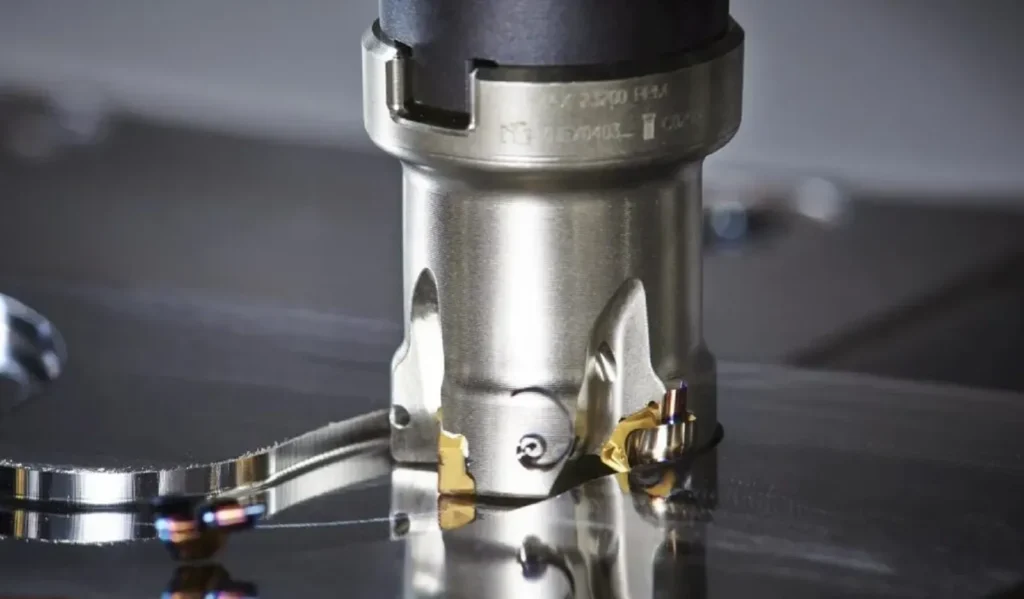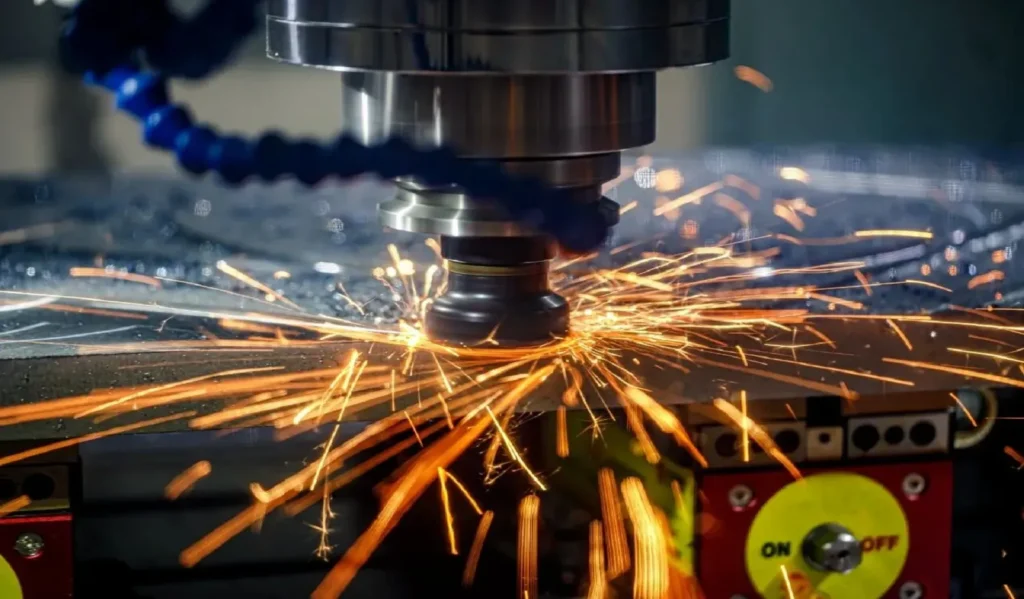クイックガイド

- 計算式:回転数=(切削速度×1000)÷(π×カッター径)
- 切削速度:フライスカッターが材料を切削する速度で、単位はm/minまたはft/min。
- π:数学定数π(3.14)。
- カッターの直径:フライスカッターの直径で、単位はミリメートル(mm)またはインチ(in)。
フライスカッターの回転速度についてもっと知りたいですか?以下をお読みください!
フライスカッターの回転数は、加工プロセスにおいて非常に重要な要素です。工具が回転し、材料が切削される速度を決定します。効率的で安全な加工を行うためには、フライスカッターの速度を正確に計算することが不可欠です。この記事では、フライスカッターの速度の基本、計算方法、そして速度に影響を与える要因について説明します。
フライスカッターの速度を計算する方法
フライス加工速度を計算するには、切削速度とフライスカッターの直径を知る必要があります。
切削速度は式で計算できる:
切削速度=(送り速度×歯数)/(π×カッタ径)
- 送り速度:カッターが1回転する間に材料が移動する距離で、ミリメートル毎分(mm/min)またはインチ毎分(in/min)で測定される。
- 歯数:フライスカッターの刃の数。
切削速度とフライスカッターの直径が決まれば、上の式を使って回転数を計算することができます。
フライスカッターの速度に影響する要因
被切断材の硬さと靭性:硬くて靭性の高い被切断材は、切断速度を遅くする必要がある。
フライスカッターの材質の種類と性質:材質が異なれば、切削速度に影響する特性も異なる。
切り込みと送り:切り込みが深く、送り速度が高いほど、切削速度は遅くなる。
フライスカッターの速度を最適化する方法
フライスカッターの速度を最適化することで、加工効率を向上させ、工具の摩耗を減らすことができる。
切削パラメータの最適化:最適な結果を得るために切削速度、送り速度、切込み深さを調整します。
フライスカッターの選択と交換:適切なタイプとサイズのフライスカッターを選択し、摩耗したカッターは定期的に交換する。
潤滑と冷却の最適化:適切な潤滑と冷却を行うことで、工具の摩耗を減らし、加工効率を向上させることができます。
フライスカッターの回転数に関する安全上の注意事項
フライスカッターの速度は、正しく使用しないと危険です。安全性を確保するために、次のような注意事項があります。
フライスカッターの最高回転数を知り、それを超えないこと。
安全眼鏡や手袋など、適切な個人用保護具(PPE)を着用すること。
工具の交換や調整を行う前に機械をロックするなど、安全な作業手順に従ってください。
フライスカッターの回転数の計算方法 FAQ
この速度はバンドソーの刃の速度と同じですか?どうやって計算するのですか?

バンドソーの刃の速度はもう少し速いようだが、おそらく各歯が材料に短時間接触しているからだろう。刃の速度の表は、インターネットのあちこちで見つけることができます。刃のメーカーが提供しているものを使うことをお勧めします。
メートル法で説明します。直径1インチ(24.4mm)の合金棒があるとします。計算は45000/(3.142×25.4)=564rpmとなります。メートル法で計算すると、150×4/1=600rpmになりますか?
この違いは、インペリアル式の4が3.82の近似値だからだ。それで計算すると573rpmとなる。
複数のフルートを持つエンドミルを使う場合、どのように計算するのですか?

回転数はフルートの数には影響されず、直径と被削材に影響されます。フルートは送り速度に影響を与えます。
切削速度はどのように決まるのですか?
切削速度は、被削材の硬さや靭性、フライスカッターの材質や形状によって異なります。切削速度は、切削速度表を参照するか、計算式を使って算出することができます。
フライスカッターの直径はどのように決まるのですか?
フライスカッターの直径は通常、工具に刻印されているか、ない場合はノギスやマイクロメータ・ノギスを使って測定することができる。
フライスカッターの歯数はどのように決まるのですか?
フライスカッターの歯数は、通常、工具に印刷されているか、入手できない場合は、拡大鏡を使って測定するか、歯数を計算することができる。
フィードレートはどのように決定されるのですか?
送り速度は、切込み深さ、切込み幅、切削速度に依存する。送り速度は、送り速度表を参照するか、計算式を使って算出することができます。
フライスカッターの速度はどのように選択するのですか?
フライスカッターの速度は、切削材料、フライスカッターの材質と形状、切り込み深さ、送り速度に応じて決定する必要があります。これはフライスカッターの速度表を参照するか、計算式を使って計算することができます。
フライスカッターの回転数が上がり過ぎないようにするにはどうすればよいですか?
フライスカッターの回転数を上げすぎると、工具の摩耗や危険の原因となります。適切なフライスカッターの回転数は、材料と工具の特性に応じて決定し、フライスカッターの最高回転数を超えないようにしてください。
フライスカッターの寿命を維持するには?
適切なタイプとサイズのフライスカッターを選び、摩耗したカッターは定期的に交換する。同時に、切削パラメータを最適化し、適切な潤滑と冷却を行うことで、工具の摩耗を抑えることができる。


